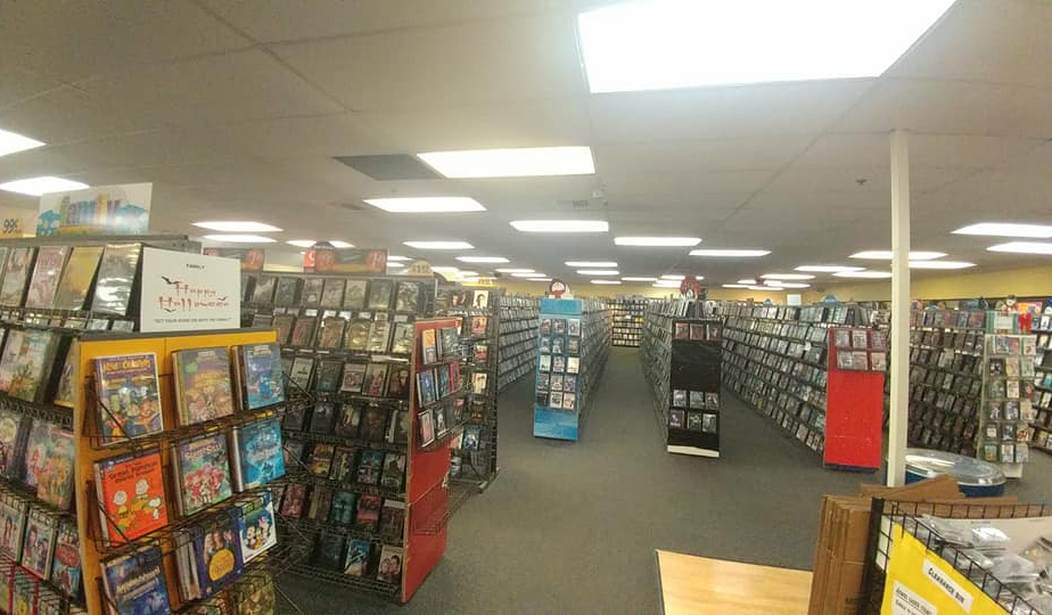While perusing the various political nonsense of the day on Wednesday, I happened upon a couple of stories about home video entertainment, one of which took me back to a simpler time in America: the early 2000s.
The first was a story about how addicted we have become to streaming video services.
The number of U.S. broadband households subscribing to two or more OTT services has more than doubled since 2014, according to a new study by streaming media tracker Parks Associates.
Nearly half — 46% — of all broadband homes has an OTT subscription, the study found, up from 33% in 2017 and 20% in 2014. At the threshold of one OTT subscription, not two or more, nearly three-quarters of all broadband homes check the box, up from 52% in 2014.
In that five-year span, from 2014 to 2019, the number of subscription streaming offerings increased by 140%, Parks said, thought the firm has noted the leveling off of late. At the start of 2019, there were 235 subscription services in the U.S., which is flat compared with 2018.
Since I decided to cut the cable cord after moving back to Arizona last year, I haven’t really been sticking to a minimalist theory of existence. I now subscribe to three streaming services (Netflix, Amazon Prime, and Sling), with add-ons on two of them. Yet, I can still rarely find a movie I want to watch.
I do enjoy a lot of the Netflix and Prime originals but I have to admit that a lot of nights bleed into morning because I’m binge-watching something. Modern problems, right?
Just a few minutes after reading that, I happened upon this story in The Atlantic:
Miguel Gomez grew up going to his local video store. He’d spend hours perusing the selections, admiring the VHS cover designs, asking the clerks for recommendations, and whittling down the choices to one rental, which he’d bring home and watch with his family.
In the late 1990s, Gomez looked on as Netflix all but killed the video store. By 2014, Blockbuster had shut nearly all of its franchise locations. (Today, one remains in Bend, Oregon.) For Gomez—and movie lovers everywhere—the death of the video store heralded the end of an era. Algorithms were replacing the human interactions that made picking a movie an enjoyable experience. You used to be able to walk into a video store without knowing what to rent; a video-store clerk might recommend something unique to your preferences, and you’d be on your way to a new cinematic discovery. These days, it’s an effort to make an informed decision about what to watch. The endless barrage of content that modern streaming services offer induces a kind of browsing fatigue in which choice can feel paralyzing.
When Gomez moved to a small town outside Philadelphia, he lamented its lack of a video store. So he opened one himself. Roy Power’s short documentary Memory Video is a portrait of Gomez and his homespun operation—one of the last rental stores of its kind.
That’s when the memory trip began. When my daughter was young, every Saturday night was movie night for the two of us. We would go to Blockbuster in the afternoon, then have dinner at our favorite Italian restaurant, then watch the movie at home. It was a nice family ritual.
Within just a few years, that ritual had been reduced to flopping on the couch over a pizza and scrolling through Netflix seemingly forever until we decided on a movie — if we decided on a movie.
I’d forgotten how much I missed the simple pleasure of going to a video store until I was doing a few shows in Alaska in late 2017. There were still a few Blockbuster stores open there at the time (that’s where the photo for this post came from) and I felt like an excited kid taking his first time-machine ride when I saw one.
I went to one before the Saturday shows and it was magical. I wandered around like I was in a museum. Although I had no intention of renting a movie, it was a thrill just being there for the nostalgia kick. I bought a souvenir shirt and vowed to spend more time there the next time I had a gig in Anchorage.

Sadly, the three stores in Alaska closed last year.
The video below about Miguel Gomez’s labor of love outside of Philadelphia is a reminder of the accelerated pace of change here in the 21st Century. Video stores were everywhere just fifteen years ago. Now I would be hard-pressed to remember the last time I even had to load a disc of any kind to watch a movie.
Now I’m going to hit Netflix to find something to stream while finishing work tonight.
Ten years from now this will probably all be done on a chip in our brains and we’ll be talking about streaming on our televisions the way we do about VHS tapes now.
___
PJ Media Associate Editor Stephen Kruiser is the author of “Don’t Let the Hippies Shower” and “Straight Outta Feelings: Political Zen in the Age of Outrage,” both of which address serious subjects in a humorous way. Monday through Friday he edits PJ Media’s “Morning Briefing.”










Join the conversation as a VIP Member